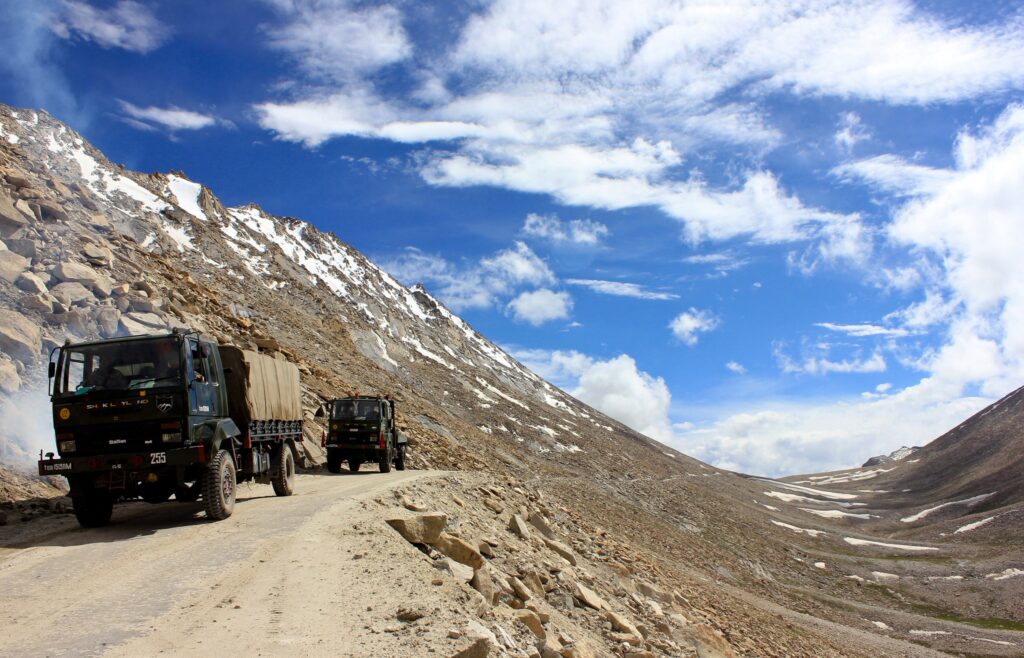During the 1962 war, all of Arunachal Pradesh (South Tibet) was occupied by the Chinese PLA which came down to Tezpur in Assam as well. In Ladakh, the Chinese army also occupied 38,000 square kilometers of area in the Aksai Chin region. Ladakh is strategically important to China because of its location and due to the fact that the Chinese national highway G219 passes through Aksai Chin to Tibet. China has further constructed six finger-like roads linking the main highway with the entire region of Aksai Chin.
On June 15, 2020, a bloody clash took place in the Galwan Valley (IIOJK) where 22 soldiers, out of which 16 were from the Bihar regiment, were killed and a major part of the Galwan Valley came under the control of the Chinese PLA thereby strengthening its position in the region. At present, 1000 square kilometers of area in Ladakh is under Chinese control. Indian political and military leaders made desperate attempts to ease tensions and approach a face-saving solution through several rounds of military level talks held at Gogra and Pangong Lake. During the talks, major issues like the disengagement from patrol point 15 and easing of tension at the Depsang plains were discussed.
These talks were held in the backdrop of two recent incidents at Barahoti in Uttarakhand and Tawang in Arunachal Pradesh. The 13th round of talks held in October this year at the Chushul-Moldo border point between Lt. General Menon and Chinese Major General Zhao Zahidon lasted for more than eight hours but ultimately collapsed. China accused India of making unreasonable demands due to which the Indian army spent the second winter in Ladakh. A spokesman of the Chinese Western theatre command said, “The Chinese side made great efforts to promote the easing and cooling of the border situation.”
The winters in Ladakh are extremely tough as it snows relentlessly and up to 4 feet is accumulated easily. The temperature drops to minus 40 degrees Celsius as well. Indian 14 corps, which was responsible for both Western and Eastern Sectors of the LAC, will now concentrate on the Eastern sector only. The 14 corps is supported by tanks, artillery and missiles. Indian army’s strike crop has the primary task of striking deep in Pakistan but it has been reassigned to the task of preparing to launch offensive strikes across the LAC in Ladakh, IIOJK.

New infrastructure is being constructed by India after the recent humiliation at the hands of the Chinese PLA. In view of the importance of Ladakh, India has started constructing tunnels for faster mobility of troops and logistics. A 6.5 kilometers-long tunnel has already been completed linking Sonamang. The 14.2 kilometers long Zojila tunnel connecting Sonamang in IIOJK to Drass town in Ladakh is in progress. The project was inaugurated by Prime Minister Modi in May, 2018, and the tunnel is being constructed to avoid Zojila, which is vulnerable and remains under the effective fire of the Pakistan army. India has deployed additional troops and will not be able to withdraw its troops even after the winters as the PLA is not likely to vacate the area.
Additional deployment is done to prevent further losses to the terrain. The additional deployment and harsh winters surely will bleed India financially. Increasing the budget for acquiring high altitude equipment, storage of weapons and missiles as well as the extensive use of C-17 and C-130 J transport aircrafts will increase the financial burden. The maintenance of a force in such conditions is a herculean task that the Indian defence budget of 73 billon dollars as compared the Chinese’s 252 billion dollars may not be able to facilitate. It continuously needs additional budget to defend Ladakh which seems to be slipping away.
According to India Today, the Indian army is likely to incur a cost of Rs.350-400 crores for providing special winter clothing for troops deployed in Eastern Ladakh. The cost per soldier for special equipment is about one Lac rupees. Last year India spent Rs.900 crores for the maintenance of its troops and this year it is expected to cross 1900 crore.
China has developed infrastructure on its side and is in a position to hold on to all areas logistically. Basically, China has changed the dynamics in the area by testing Indian capabilities. India is avoiding engagement with the PLA because of its weak and low morale army, internal crisis and economic recess. The Indian army by no means is capable to compete tactically and strategically against the Chinese PLA. At the same time, India is also propagating the so-called concept of a two front war. They fear threat to Ladakh, Siachen and Kargil–a joint operation of the Chinese and Pakistani army. Based on this theory, General Rawat is planning to change and reorganise the Indian army.
For China, the focus is not on India, as they do not take it as a military threat, but the primary focus is on the US forces in the Western Pacific and South China Sea. India has allied itself with the US to contain China. The US will not tolerate China becoming a superpower and challenging its might. There are alliances across the globe to counter China, and QUAD is one in the region. Indians, like Americans in Afghanistan, made some serious miscalculations and underestimated Chinese capabilities, and now, have landed themselves in trouble.
The Indian army is by no means capable of competing tactically and strategically against the Chinese PLA.




